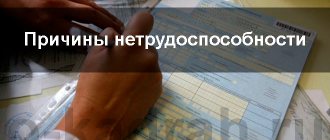The procedure for investigating industrial accidents is established by law. It is carried out to find out the circumstances and causes of damage to the health of workers and other persons involved in the employer’s production activities. All cases where an employee performed work due to an employment relationship with the employer or the execution of his task (instructions) are subject to investigation.
Key issues
- How are accidents usually investigated?
- Where to start an investigation if the accident happened a long time ago?
- How to act in different situations?
What is considered an industrial accident?
An industrial accident occurs when, as a result of an unforeseen combination of circumstances or incorrect actions, people are injured. The accident is related to working time, place and professional duties, and one of these three factors is sufficient.
How to investigate a fatal accident at work ?
If as a result of the event:
- the worker has lost his ability to work permanently or temporarily, even for one day;
- he will now have to look for a job with different working conditions;
- something irreparable happened and someone died,
then such a case requires an investigation regulated by law and appropriate documentation.
IMPORTANT! The employer has absolute and unconditional responsibility for the life and health of employees by ensuring safe working conditions.
How accidents are usually investigated
The procedure for investigating industrial accidents is established by law. It is carried out to find out the circumstances and causes of damage to the health of workers and other persons involved in the employer’s production activities. All cases where an employee performed work due to an employment relationship with the employer or the execution of his task (instructions) are subject to investigation. The procedure for investigating industrial accidents is established by Articles 227 - 231 of the Labor Code, and the “Regulations on the peculiarities of investigating industrial accidents in certain industries and organizations” (approved by Resolution No. 73 of the Ministry of Labor of the Russian Federation of October 24, 2002).
Initially, information about the accident should come to the employer from the victim. This is due to the requirement of the law, because the employee is obliged to immediately notify his immediate or superior manager about any situation that threatens the life and health of people, about every accident that occurred at work, or about a deterioration in his health, including the manifestation of signs of acute occupational illness. diseases (poisoning) (Article 214 of the Labor Code of the Russian Federation).
Since the law does not specify whether the accident occurred with the employee himself or with his colleague, eyewitnesses can also report the incident.
The message must flow through the chain of command from the bottom up. For example, a worker to a foreman, a foreman to a foreman or site manager, a site manager to the head of an organization. At the same time, the labor protection service is notified.
If the information is received in a timely manner, the employer needs to:
- organize the provision of first aid to the victim;
- take measures to prevent other workers from being harmed;
- if possible, keep the situation at the scene of the incident unchanged, and if it is impossible, record it (make diagrams, sketches, take photographs, etc.);
- report the accident to the labor inspectorate, prosecutor's office, local authorities and other organizations in accordance with legal requirements;
- organize an investigation (by ordering to create a commission, collect the necessary information, information and draw up documents).
An unfortunate incident or an accident?
Before you begin to draw up the appropriate documentation, you need to find out whether the incident can be classified as an industrial accident.
Completed sample report on an industrial accident.
A specially created commission, having studied the causes, place and time of the incident, draws a conclusion about its connection with production, setting them out in the main document regarding accidents - an act of form N-1.
The following verdict options are possible:
- Accident related to work. To do this, the connection between the disaster and work activity must be clarified and documented or confirmed by witness testimony.
Relationship with working hours:- the accident occurred during working hours, including lunch breaks, preparation for work and completion of work;
when working overtime for the benefit of the company;
- during periods between shifts or shifts.
Connection to the scene:
- on the way to work and back (if enterprise transport delivers employees);
- on a business trip and on the way there and back;
- when traveling by personal transport on business (if this is noted in the contract).
Responsibilities:
- the work involves activities with sources of increased danger;
- the employee carried out the employer’s orders, even unrelated to his position;
- the victim helped eliminate the consequences of emergency situations.
How to compensate for lost earnings in the event of an accident at work?
- the employee was and acted at the enterprise outside of working hours;
any activity of the employee at work was carried out for personal purposes;
In such cases, although an investigation is carried out, the report on it is drawn up in any form.
Where to start an investigation if the accident happened a long time ago
A special situation arises when an employee, for some reason, did not promptly report a work-related injury to the employer, for example, because the loss of ability to work did not occur immediately. In this case, the basis for the investigation is the statement of the victim or his authorized representative. The period for investigation is set at one month (Article 229 of the Labor Code of the Russian Federation) from the date of receipt of the application.
The application can be submitted not only to the employer, but also to the labor inspectorate. The circumstances of the accident indicated in the statement must be investigated without fail.
The current labor legislation does not limit the statute of limitations for filing an investigation into industrial accidents.
If the accident occurred before January 1, 2002, the investigation must use the regulations that were in force at the time of the incident.
Example No. 1
The employee's accident occurred in 1994, when he was heading to his business trip on an intercity bus. No investigation was carried out. Later, as a result of the injury, the employee’s health condition worsened, and in 2005, the victim contacted the employer with a request to investigate the accident and draw up an N-1 report.
Having received the victim's statement, the employer organized an investigation. The information provided by the employee was confirmed. However, the commission did not classify it as an industrial accident, because in the Regulations “On the Investigation and Recording of Industrial Accidents” that were in force at the time of the incident (approved by Resolution of the Presidium of the All-Russian Central Council of Trade Unions and the USSR State Mining and Technical Supervision Committee dated August 17, 1989 No. 8-12), such qualification was not provided for.
Example No. 2
An accident to an employee occurred in 1999 while he was performing work under a civil contract. No investigation was carried out. The victim contacted the labor inspectorate in 2004 due to the deterioration of his health. He asked to investigate the accident and draw up an N-1 report.
The current Regulations “On the Peculiarities of Investigation of Industrial Accidents in Certain Industries and Organizations” (approved by Resolution No. 73 of the Ministry of Labor of the Russian Federation of October 24, 2002) does not provide for the qualification of an event under the circumstances specified in the application as an industrial accident. But according to the Regulations in force at the time of the incident (approved by Decree of the Government of the Russian Federation of March 11, 1999 No. 279), the event was qualified as an industrial accident, and an act of form N-1 was issued.
The most difficult cases to investigate are cases of injury to workers that occurred long ago and were not investigated in a timely manner under unclear circumstances. In addition, sometimes an employee who has become disabled due to a general illness or his relatives try to connect this with an injury at work. The investigation of such complaints must be carried out impeccably.
What should an injured employee do?
After the immediate threat to health has receded a little into the background, the employee begins to think about the financial responsibility of his employer. If the worst happens, this question arises before the orphaned relatives. So, what should an employee do if he or she is the victim of an accident at work?
- Notify your employer as soon as possible.
- Keep all medical documents and receipts for medications and medical services.
- Wait until representatives of the commission appointed for the investigation contact him (or initiate an inspection yourself by contacting the labor protection authorities).
- Receive a copy of Act N-1 drawn up by the commission.
ADDITIONAL INFORMATION! If the employee felt the consequences of the accident after some time, or his health deteriorated gradually, he must inform the employer about this as early as possible: this will affect the calculation of compensation payments.
Conditions for filing an accident report
The most necessary condition for drawing up this document is the recognition of the incident as an accident. The procedure for preparing accident investigation materials requires such recognition in the first place. To define an event as an industrial accident, you should refer to Article 3 of Law No. 125-FZ of July 24. 1998.
It states that an event that results in injury or any other harm to the health of an insured employee during the performance of work duties, as a result of which there is a need for his transfer to another job, and also if the consequence of this event is the loss of a person’s professional ability to work or his death occurs, is accident at work.
It is worth noting that industrial accidents include events that happen to an employee on the territory of the enterprise or outside it, if at the same time he was performing his assigned job duties or an assignment from a manager.
Accidents are also considered to be cases that occur during periods of travel to or from work, as well as if the incident is associated with participation in the elimination of the consequences of accidents, emergencies and disasters.
What payments can you expect?
Not all financial responsibility lies with the employer; many costs are compensated by the Social Insurance Fund (SIF).
REFERENCE. According to current legislation, all employees must be insured, even those who do not have Russian citizenship (Article 5 of Federal Law No. 125-FZ of July 24, 1998). If a citizen does not consider it necessary to adhere to this rule of law, he can count on compensation not as an employee, but in accordance with the civil code (Part 2 of Chapter 59 of the Civil Code of the Russian Federation).
The method and amount of payments vary depending on the degree of injury.
The injury is quite mild (short-term loss of ability to work) - sick leave in the amount of the average salary is paid by the employer.
Severe injury or death : part of the costs is borne by the employer, and part by the Social Insurance Fund.
Insurers will pay:
- sick leave;
- the cost of treatment, examination, rehabilitation, prosthetics, etc.;
- if necessary, disability benefits;
- in case of death - benefits to relatives for the loss of a breadwinner.
The employer, if proven guilty in the incident, will pay:
- lost earnings due to injury;
- compensation for moral damage.
How to act in different situations
If an employer does not learn about a work-related accident immediately after it occurs, there are two options for investigation. Let's look at each of them.
Option one
The application was sent directly to the employer. This situation may arise, for example, when an employee, considering the injury to be minor, does not tell anyone anything and seeks medical help on his own. The application is submitted after medical care has been provided to him.
Having received such an application, you need to:
1. Issue an order to create a commission to investigate the accident.
The composition of the commission is formed, as in a regular investigation - at least 3 people (the number of commission members is always odd) depending on the severity of the injury. Employees whose responsibilities include direct supervision of the work of the victim are not included in the commission.
2. It is necessary to immediately make a request to the medical organization where the victim applied for assistance. The question of the severity of the injury is decided by doctors. Doctors should be asked for an opinion on the nature of the health injuries received and their severity.
3. Report an injury:
- if it’s mild, go to the Social Insurance Fund;
- if severe - to the Social Insurance Fund and the labor inspectorate, the prosecutor's office, the trade union, etc.
4. Demand an explanation from the victim, interview eyewitnesses and examine other materials in the case.
The victim provides the commission with a detailed explanation of the accident, which should contain:
- an explanation of why he did not inform the employer about the incident in a timely manner;
- description of the circumstances of the incident;
- indication of eyewitnesses, if any;
- data of employees who gave him work assignments and supervised them, etc.
As a rule, victims' explanations are not exhaustive, so commission members should prepare additional questions to which they would like answers and document them in the form of an interview protocol. If the victim does not want to answer any question, this must be noted in the protocol. At the same time, the employee is explained that his refusal to cooperate with the commission may affect the conclusions at the end of the investigation, and not in his favor.
The victim should not be in the role of an outside observer; he should assist the commission in its investigation.
Eyewitnesses, if the victim named them, must also be interviewed in detail on questions prepared in advance by the commission. If necessary, and if possible, an eyewitness should be asked to show the position of the victim, himself and other persons at the scene of the incident. When this cannot be done, show the scene of the incident on a diagram drawn up from the words of an eyewitness, and then, by comparison, make sure that the information received is correct and thus determine the presence or absence of perjury. If the eyewitness has changed his place of residence (work), questions should be sent to him in writing.
Of course, it can be very difficult to conduct a quality investigation of such an accident, especially if a long time has passed. The commission must find out:
- what preceded the accident;
- who gave the task and supervised the work;
- how the labor process proceeded;
- what actions were performed by the victim and other persons working with him, etc.
If necessary, the course of an event is established almost minute by minute.
5. Based on the collected investigation materials, establish the circumstances and causes of the accident, as well as the perpetrators. This is done by the commission, which also develops measures to eliminate the causes and prevent such accidents. The commission determines whether the actions of the victim at the time of the accident were due to labor relations with the employer or participation in his production activities, and, if necessary, decides on the issue of recording the accident and qualifies it as an industrial accident or as not related to production.
6. Document the commission’s findings. The issue of drawing up an act of form N-1 is decided only after a comprehensive verification of the circumstances of the incident, as well as a certificate from the medical institution. Sometimes it is decisive for qualifying an accident.
If the commission comes to the conclusion that there was no accident at work, the results and conclusions of the investigation are formalized in an act. You can use Form 4 contained in Appendix 1 to Resolution of the Ministry of Labor of Russia dated October 24, 2002 No. 73.
Based on the requirements for the content of the accident investigation report, it contains only those facts that were established by the commission during the investigation. Filling out the relevant sections of the report should be done only on the basis of documents (briefing logs, personal cards in the T-2 form, protocols of eyewitness interviews, resolutions (decisions) of law enforcement agencies, etc.) generated during the investigation.
The commission's conclusions should not be of a presumptive nature; they are presented in an affirmative form. The findings indicate that events developed exactly this way and not otherwise.
Employer's procedure
Upon learning of an emergency, the employer must take a number of actions, as required by common sense and applicable laws.
- Provide first aid to victims.
- Prevent further development of the emergency situation and protect other people:
- remove personnel from the scene;
- close access to the danger zone;
- with the necessary permits and equipment, begin localizing or eliminating the consequences or call authorized services, for example, the Ministry of Emergency Situations.
- Ensure that the situation remains intact until the investigation:
- fence off the area and put up warning signs;
take photos or videos;
- draw up a diagram of the event.
- If a group of 2 people suffered from an accident, or its consequences are severe, it is necessary to inform the necessary authorities and persons (the notification procedure is determined by Article 228.1 of the Labor Code of the Russian Federation):
- local representative office of GIT;
the prosecutor's office;
- local administration;
- FSS;
- trade union body.
- Investigate and document the accident.
IMPORTANT! It is better to entrust this to a full-time occupational safety specialist: he is still required to be a member of the created commission.
NOTE! If the victim’s condition gradually or sharply worsened or he died after some time, you must notify the State Tax Inspectorate, the association of trade unions and the Social Insurance Fund no later than within three days.






